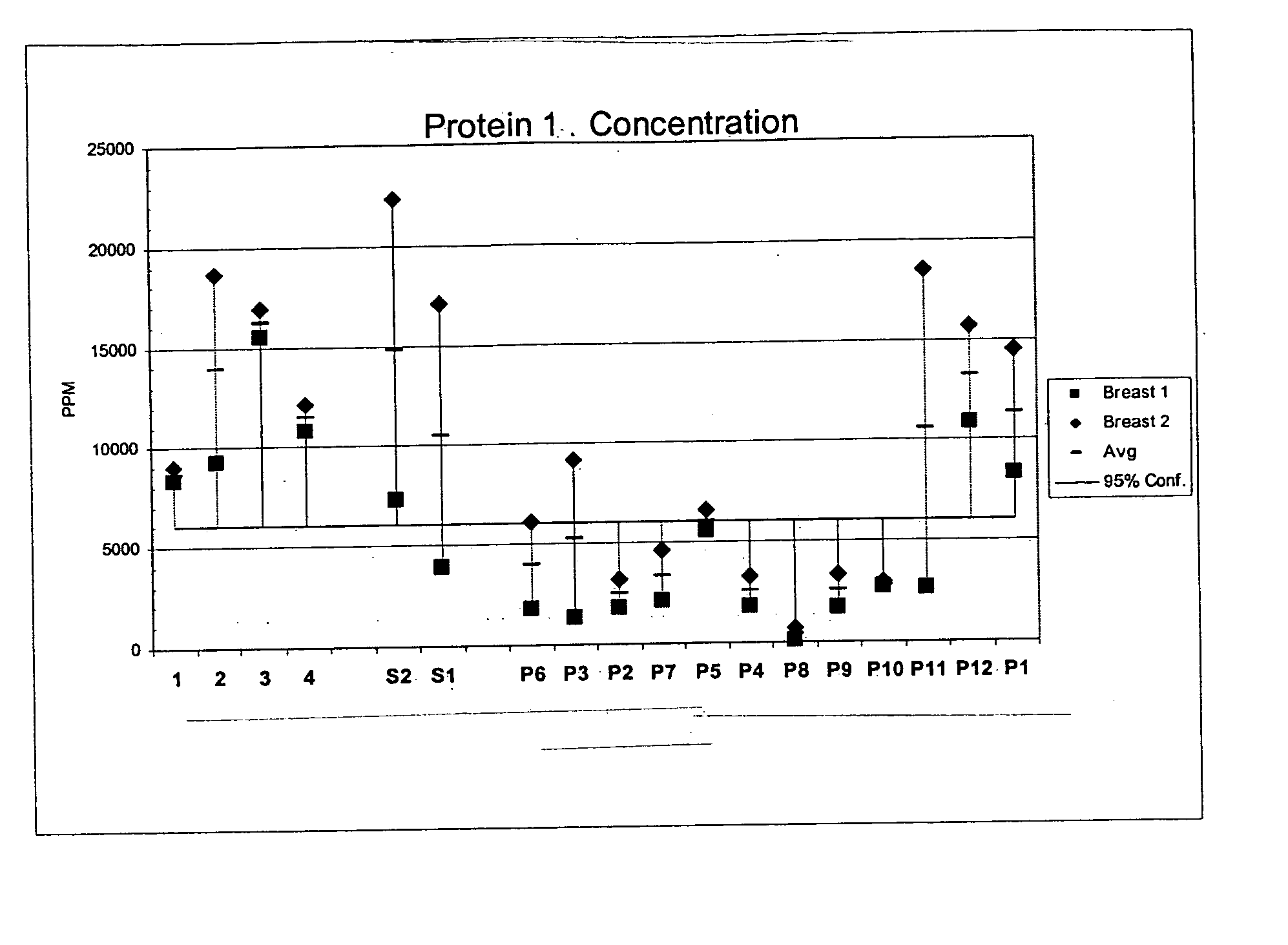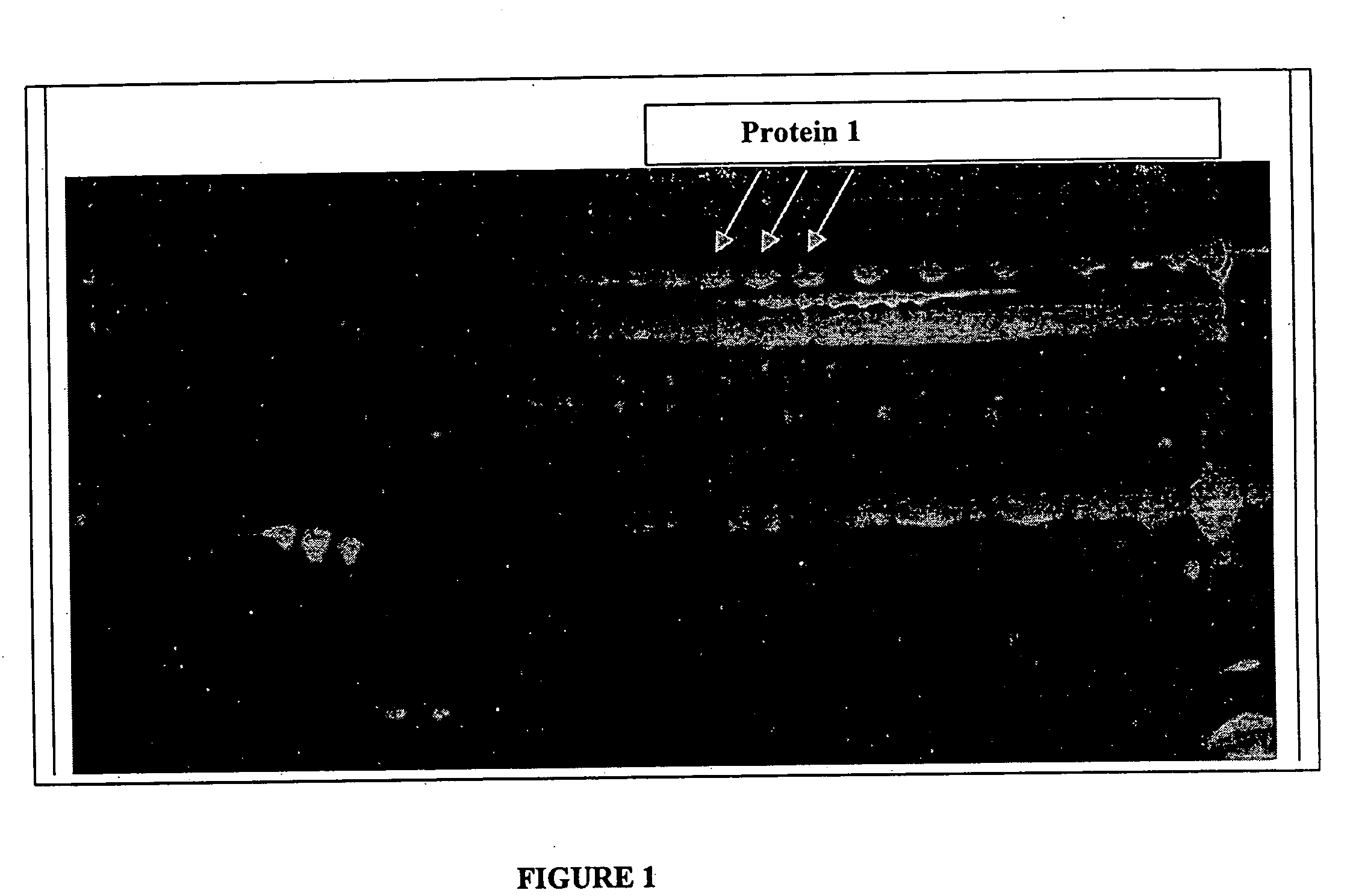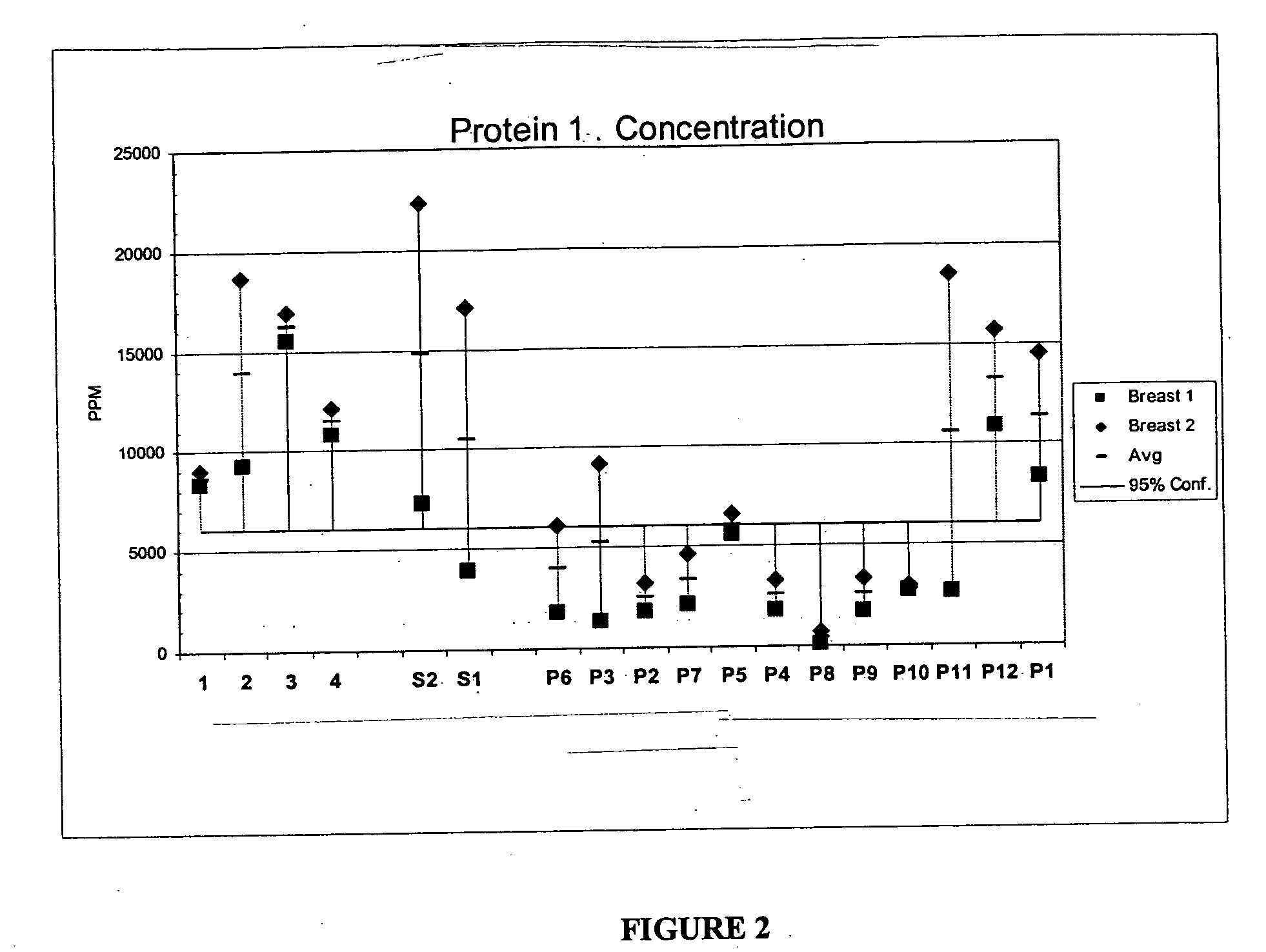Acetyl-LDL receptor as a biomarker for breast cancer
a biomarker and acetyl-ldl technology, applied in the field of breast cancer biomarker identification, can solve the problems of deteriorating patient health, revealing the risk or potential risk of individuals developing a disease, and infancy of proteomic testing for diagnostic purposes, and achieve the effect of reducing the expression of acetyl-ldl receptor
- Summary
- Abstract
- Description
- Claims
- Application Information
AI Technical Summary
Benefits of technology
Problems solved by technology
Method used
Image
Examples
Embodiment Construction
[0025] The present invention relates to a biomarker for breast tissue disease. More particularly, the present invention relates to the identification of the acetyl-LDL receptor as a biomarker useful for both the early recognition of breast cancer and a high-risk for the development of breast cancer.
[0026] The method for identification of acetyl-LDL receptor as a biomarker for breast disease, particularly breast cancer, is based on the comparison of 2D gel electrophoretic images of breast ductal fluid obtained by breast nipple aspiration or ductal lavage from women with and without diagnosed breast cancer.
[0027] 2D gel electrophoresis has been used in research laboratories for biomarker discovery since the 1970's (Goldknopf, I. L. et al. 1977. Proc. Natl. Acad. Sci. USA 74:864-868). In the past, this method has been considered highly specialized, labor intensive and non-reproducible. Only recently with the advent of integrated supplies, robotics, and software combined with bioinfor...
PUM
 Login to View More
Login to View More Abstract
Description
Claims
Application Information
 Login to View More
Login to View More - R&D
- Intellectual Property
- Life Sciences
- Materials
- Tech Scout
- Unparalleled Data Quality
- Higher Quality Content
- 60% Fewer Hallucinations
Browse by: Latest US Patents, China's latest patents, Technical Efficacy Thesaurus, Application Domain, Technology Topic, Popular Technical Reports.
© 2025 PatSnap. All rights reserved.Legal|Privacy policy|Modern Slavery Act Transparency Statement|Sitemap|About US| Contact US: help@patsnap.com



